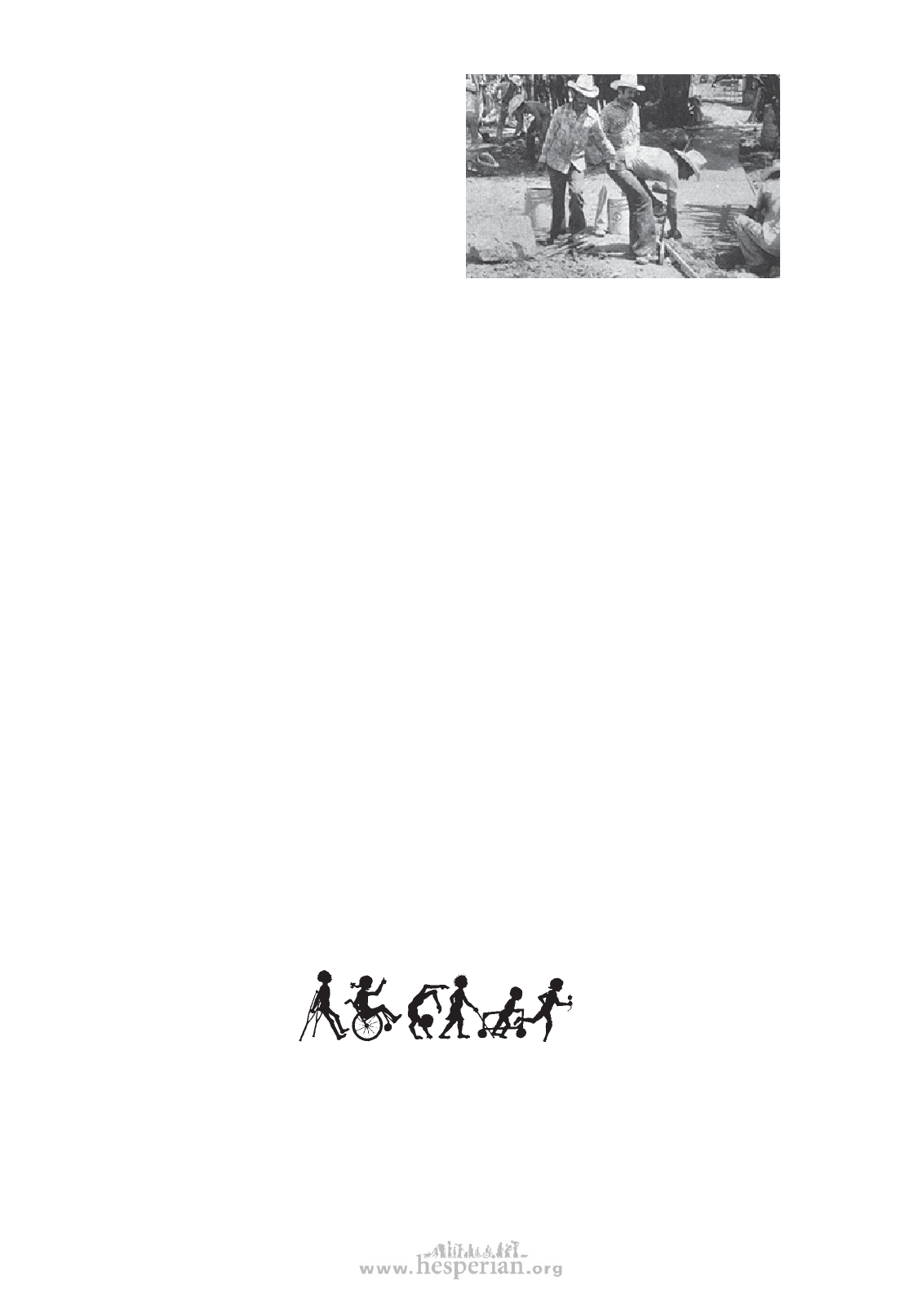
406 chapter 45
In bottom-up programs, ‘community
participation’ means something else.
The program develops within a village
or neighborhood, according to the needs and
wishes of its members. It may take an
outsider with some knowledge in
rehabilitation and skill in organizing
people to help get things started. But
it is the people themselves, especially
disabled persons and their families, who
make the decisions about their own
In the village of Ajoya, Mexico, over 60 families
program. They can learn from other
programs and from the experts. But they
participated in building a cement walkway from
the rehabilitation center to the main street.
do not simply copy or follow others. They pick and choose from whatever advice and
information they can get in order to plan activities that fit the needs and possibilities
of their particular village, and their particular children.
There are advantages and disadvantages to top-down and bottom-up. For a central
government, a standardized, top-down approach is easier to introduce, administer,
and evaluate in many communities at the same time. But in primary health care, it has
become clear that top-down programs frequently fail or have serious weaknesses,
mainly because they do not have enough popular leadership, understanding, and
personal commitment. These are especially important for rehabilitation. Every disabled
child is different and has her unique combination of needs. An imaginative, problem-
solving approach is essential. If decisions and plans come pre-packaged from above,
rehabilitation measures often do limited good and sometimes even harm.
In a bottom-up approach there is a greater sense of equality, and of arriving at
decisions together. People do not just follow instructions. They consider suggestions.
They want to know why. This greatly increases the chances that exercises, aids, and
activities will really fit the individual needs of the child. It also makes rehabilitation
more interesting, meaningful, and valuable for all concerned. It helps both parents and
children become more independent.
A bottom-up approach to rehabilitation has the advantage of flexibility and adaptability
that comes from being organized and controlled locally. Planning is a continuous
learning process that responds to the changing needs, difficulties, and possibilities
within the community. Especially when disabled persons and family members play
a leading role, participants at every level are likely to develop a spirit of respect,
friendliness, and equality that keeps a program human and worthwhile.
Above all, a bottom-up program organized by those it serves, decentralizes and
redistributes power: people who have been powerless begin to find strength through
unity. You can never be sure where things may lead, how far people may go in terms
of taking charge of their own lives or in demanding their rights.
On the following pages we look at community rehabilitation activities and programs from
a ‘bottom-up’ approach in a village situation. This is where our own experience lies. For a
different approach with more of the planning from above, we suggest you see the World
Health Organization’s Training In the Community for People with Disability along with the
supplementary materials (see p. 637).
Disabled village Children